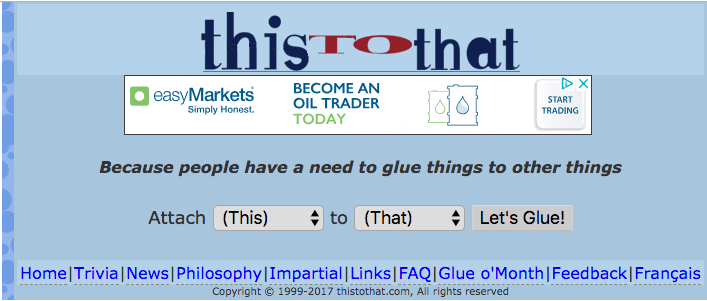A misty-eyed journey into the boring old days
One bud of my cheap and nasty in-ear bluetooth headphones spontaneously popped into its component parts last week, so of course I took to the web to make sure I was using the correct glue to re-assemble the tiny pieces.
What I wasn’t expecting was a trip down memory lane, of the most mundane kind possible.
A Google search for “which glue for plastic to plastic” these days elicits a results page with the following content, in order:
- Five sponsored shopping results
- a wikiHow featured snippet which almost answered my question
- a “People also ask” panel that namechecks a market leading glue brand among the questions
- Four non-promoted links, all with clearly A-grade SEO and inbound link game.
- A panel of three YouTube videos, mostly video marketing
- Four further non-promoted results that link mostly to e-commerce sites
- Six image search results, all showing packets of glue
- Related searches that aren’t all that related
Now that I have 20+ years of experience searching the web, my brain is well trained to avoid most of this, so on page 3 or 4 (yes I’m one of those people that go past page 1) I came across a link to a DIY forum discussion from about ten years ago.
One of the responses to the forum question (which was very similar to my own) suggested taking a look at a website called This to That.
A glimmer of recognition hit me. I hit the link. The site loaded almost instantly. I’d seen this website before! About 18 years ago, to be vague.
This is the entire contents of the home page:

No bullshit here (well, apart from one Google ad)! This website has a hideous logo (with a seminal early 90s font), that great strapline “Because people have a need to glue things to other things”, and a simple form with two inline fields to choose what materials you’re trying to glue together.
Now to be honest, the subject of This to That is fairly dull and functional, so when it comes to reminiscing about the late 90s web, everybody namechecks Geocities rather than a single-serving site about glue.
But sites like This to That have mostly long since disappeared completely or have been re-purposed beyond recognition, their domain authority deployed in the name of gratuitous advertising and generic SEO-focused Wordpress themes.
So it’s great to see a long-forgotten example of 90s web design and development that’s still around to tell a tale. And it’s not just a fun but worthless bit of esoterica. It maintains a lot of its usefulness. The glue recommendations are by a theatre set maker, the FAQs are as entertaining as FAQs about glue get.
Sure, the most recent news update - over a year old - was itself the first news article for nearly six years. But don’t let that put you off. I like to think that the owner has been earning a steady stream of passive income from this since AdSense was launched in 2003.
Take a minute to view source and discover some of the fun stuff to be found:
- HTML 3.2!
- A table layout!
- cgi-bin!
- Server-side includes! (Notice the
.shtmlsuffixes) <font>and<center>elements!- HTML styling attributes like
bgcolor! - Verdana body text!
- Gifs as the primary image format!
- Non-breaking spaces galore!
- Inline
<script>tags with HTML comments to protect browsers that didn’t understand JavaScript!
Oh, and there’s this gif to remind us about the browser wars:

All of this in only 18KB transferred and four requests for the home page, not including the Google Ad. When you include the ad, it’s around 270KB and 35 requests!
Of course, it’s an accessibility and web standards disaster. But for me it’s a highly trustworthy source of data, purely because of its authenticity and lack of hard sell.
Fast, boring and trustworthy. What’s not to like?
All the best,
– Jim
